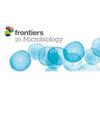发掘马氏克鲁维氏菌在确定奶酪香气成分方面的潜力
IF 4
2区 生物学
Q2 MICROBIOLOGY
引用次数: 0
摘要
导言奶酪微生物群非常复杂,由技术相关微生物、腐败微生物、机会性微生物和致病微生物组成。其中主要是乳酸菌和酵母菌。最有趣的乳制品酵母菌之一是马氏雪酪酵母菌,因为它具有技术特性,包括产生香味化合物的能力。通过接种马氏酵母菌 FM09 和商业干酪乳酸酶杆菌菌株的共培养物来制备实验奶酪,并与只接种干酪乳酸酶杆菌的奶酪进行比较。总成分由 FoodScan™ 2 乳制品分析仪测定,游离氨基酸与镉-茚三酮反应后在 507 纳米波长下进行评估。通过顶空固相微萃取法提取挥发性有机化合物,并通过气相色谱-质谱联用臭气活性值进行分析。结果接种马氏酵母菌会导致奶酪的 pH 值升高,蛋白质含量降低,这与在这些奶酪中检测到的较强的蛋白质分解作用一致。马氏酵母菌对香味化合物的含量有定量和定性的影响。特别是观察到醇类、酯类和有机酸的含量增加。此外,有 12 种化合物仅在联合培养获得的奶酪中检测到。这些差异与气味活性值(OAV)一致。事实上,在使用商业菌株的奶酪中,只有 11 种化合物显示出 OAV > 1,而在使用共培养菌株的奶酪中,有 24 种化合物显示出 OAV > 1。qPCR 分析表明 ATF1、EAT1 和 IAH1 基因过度表达。本文章由计算机程序翻译,如有差异,请以英文原文为准。
Unlocking the potential of Kluyveromyces marxianus in the definition of aroma composition of cheeses
IntroductionThe cheese microbiota is very complex and is made up of technologically-relevant, spoilage, opportunistic and pathogenic microorganisms. Among them lactic acid bacteria and yeasts are the main ones. One of the most interesting dairy yeasts is Kluyveromyces marxianus because of its technological properties including the ability to produce aroma compounds.MethodsThis study investigated the contribution of Kluyveromyces marxianus to the gross composition and aroma profile of cow cheeses. Experimental cheeses were prepared by inoculating a co-culture of K. marxianus FM09 and a commercial strain of Lacticaseibacillus casei and compared with cheeses obtained with only L. casei . The gross composition was determined by a FoodScan™ 2 Dairy Analyser, and free amino acids were evaluated at 507 nm after reaction with Cd-ninhydrin. The volatile organic compounds were extracted by head-space solid phase micro-extraction and analyzed by gas chromatography–mass spectrometry coupled with odor activity values. qRT-PCR was applied to determine the expression of genes involved in esters synthesis and degradation.ResultsThe inoculation of K. marxianus induced an increase of pH and a reduction of protein content of cheeses, in agreement with the stronger proteolysis detected in these cheeses. K. marxianus influenced the content of aroma compounds both quantitatively and qualitatively. In particular, an increase of higher alcohols, esters and organic acids was observed. Moreover, 12 compounds were detected only in cheeses obtained with the co-culture. These differences were in agreement with the odor activity values (OAV). In fact, only 11 compounds showed OAV > 1 in cheeses obtained with the commercial strain, and 24 in those obtained with the co-culture. The qPCR analysis revealed an over expression of ATF 1, EAT 1, and IAH 1 genes.ConclusionKluyveromyces marxianus could act as an important auxiliary starter for cheese production through the development and diversification of compounds related to flavor in short-aged cow cheeses.
求助全文
通过发布文献求助,成功后即可免费获取论文全文。
去求助
来源期刊

Frontiers in Microbiology
MICROBIOLOGY-
CiteScore
7.70
自引率
9.60%
发文量
4837
审稿时长
14 weeks
期刊介绍:
Frontiers in Microbiology is a leading journal in its field, publishing rigorously peer-reviewed research across the entire spectrum of microbiology. Field Chief Editor Martin G. Klotz at Washington State University is supported by an outstanding Editorial Board of international researchers. This multidisciplinary open-access journal is at the forefront of disseminating and communicating scientific knowledge and impactful discoveries to researchers, academics, clinicians and the public worldwide.
 求助内容:
求助内容: 应助结果提醒方式:
应助结果提醒方式:


